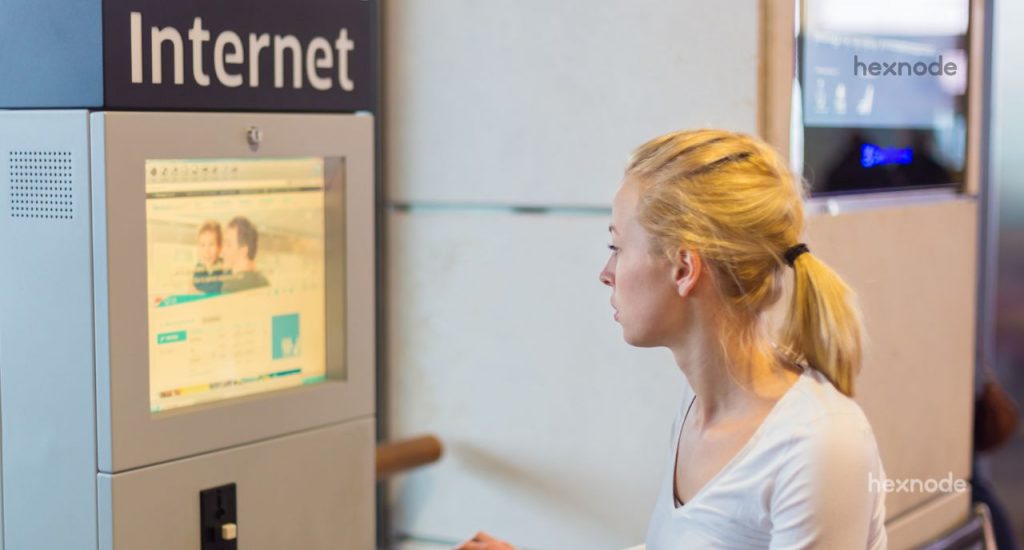Assets are integral to life, even for enterprises. From electronic gadgets like mobile phones and laptops to personal belongings like cars, real estate, and data, anything and everything that you own is an asset.
Among enterprises, assets refer to anything under the organization’s control that can be used to store or generate more value. Therefore, taking care of assets is not to be ignored.
Spending time and effort in managing devices might look like an inefficient way to spend your resources, but it is vital for an organization.
Businesses that plan on scaling up need to take care of asset management properly; otherwise, it will be a nightmare financially.
IT asset management guarantees that your organization may continue to evolve and develop by making the best use of its assets. It will help keep your organization on track, manage risk, and much more.
What is IT asset management?
Asset management is the process of acquiring, maintaining, and disposing of business assets in an economical way. Although the idea of asset management is neither new nor original, it is both incredibly important and effective.
Sign up for a free trial
Sign up for a free trial and explore Hexnode's IT asset management features.
Sign upSomeone unfamiliar with asset management may think it is a bad decision. Asset management should be thought of as a crucial component of any business strategy, whether it is being developed for an existing business or a new one.
Why is IT asset management software important
IT asset management has a lot of benefits, not all of which are financial. Some of these benefits may not appear to be considerable initially, but they will be significant in the long run.
Some of the main benefits of IT asset management are:
- It lets you keep track of all assets owned by your company.
- It helps to check the condition of your assets and plan timely repairs and maintenance.
- You have a complete overview of your asset’s life cycle.
- Automatic alerts and warnings can be set up according to your asset’s status.
- Using asset management, you can take a step closer towards regulatory compliance.
5 must-have IT asset management functionalities
Some of the most important features of software for asset management are:
1. Asset tagging, asset status tracking and asset auditing
Asset tagging is the first step in asset management. Asset tagging means assigning and labeling your assets with individual identification tags. By doing so, you simplify asset management’s next step, asset tracking.
Keeping track of your assets is an absolute necessity because only then can you know if the right person is using the right asset, if any assets are missing, or even find out if assets are in proper condition. Once the assets are tagged, tracking them is easy.
You should schedule proper asset auditing at regular intervals of time. Asset auditing is just an extension of asset tracking and lets you know if any assets are missing and if all assets are where they should be.
SnipeIT is a software service that provides you with all of the above-mentioned features. From tagging to tracking to auditing, SnipeIT provides a simplified approach to IT asset management.
2. Network security
Once you have set up a proper strategy to keep track of your assets, you must ensure its security. By security, we mean both network security as well as endpoint security. So first, let’s discuss network security.
Endpoint security vs network security: Why one is not enough
Ensuring a proper network security structure for your organization is an important part of IT asset management since all the devices in an organization access the company network. An attack on the company’s network can be catastrophic since all the data and devices connected to the network also become vulnerable.
Some tools that can help you protect your networks are firewalls, Virtual Private Networks (VPNs), Intrusion Prevention Systems (IPS) and Zero Trust security structures. Fortinet is a network security tool that helps you set up firewalls, zero trust systems and IPS quickly.
3. Endpoint security
Endpoint security is just as important as network security. In fact, you should take more care to secure your endpoint than networks because endpoints act as gateways into organizational networks.
You can ensure endpoint security up to a certain extent by using several simple tools like device encryption and antivirus. However, if you want to go further to secure your endpoints, you can use a good Endpoint Detection and Response (EDR) solution.
Almost all of the leading operating systems out there provide their own device encryption, like FileVault for macOS, BitLocker for Windows and native device encryptions for Androids and iOS devices.
Kaspersky is one of the forerunners in providing the best antivirus and EDR solutions. With Kaspersky, you simply set up and enforce antivirus and EDR to be switched on in all endpoints in the organization.
4. Data Loss Prevention
Data Loss Prevention (DLP) solutions help protect the more delicate and intricate assets in your organization, data. What DLPs do is, they monitor access to data, filter incoming and outgoing data streams, generate reports on data loss and also find out any suspicious data activities.
DLP solutions help you meet regulatory compliance standards like HIPAA and GDPR. It also helps the IT asset management team to notify the IT team if there is an incident of data loss or a data breach.
Endpoint Protector by CoSoSys offers high levels of protection against data breaches and helps companies tackle compliance risks relatively easily.
5. Endpoint management and monitoring
Last but not least, you need a proper endpoint management tool to manage and monitor all your endpoints. A Unified Endpoint Management (UEM) solution is the perfect tool to care for all your endpoint management needs.
A UEM lets you keep track of all your endpoints, control settings on them and monitor their status and health condition. In addition, UEMs help companies remotely configure and assign devices to users easily.
With the help of a UEM, organizations can remotely configure and control all kinds of activities on a device, from Wi-Fi settings to content sharing.
When managing your assets, it’s important to know the health condition of your devices. So even though asset tracking helps you out a little in that department, UEM helps organizations get a complete overview of the device’s health.
Hexnode’s UEM solution can help you manage devices across all platforms and OS, including Android, Windows, FireOS, iOS, macOS, and tvOS devices. With Hexnode, you can ensure that devices are ready for users even before they switch them on for the first time. You can also retire endpoints with Hexnode, making it extremely useful in device life cycle management.
In conclusion,
All the above-mentioned features represent critical aspects of IT asset management and protection, but there is a lot more to it. These five IT asset management functionalities will help you kick-start your journey towards a better business management strategy.
Disclaimer
All product and company names are trademarks™ or registered® trademarks of their respective holders. Use of them does not imply any affiliation with or endorsement by them.






